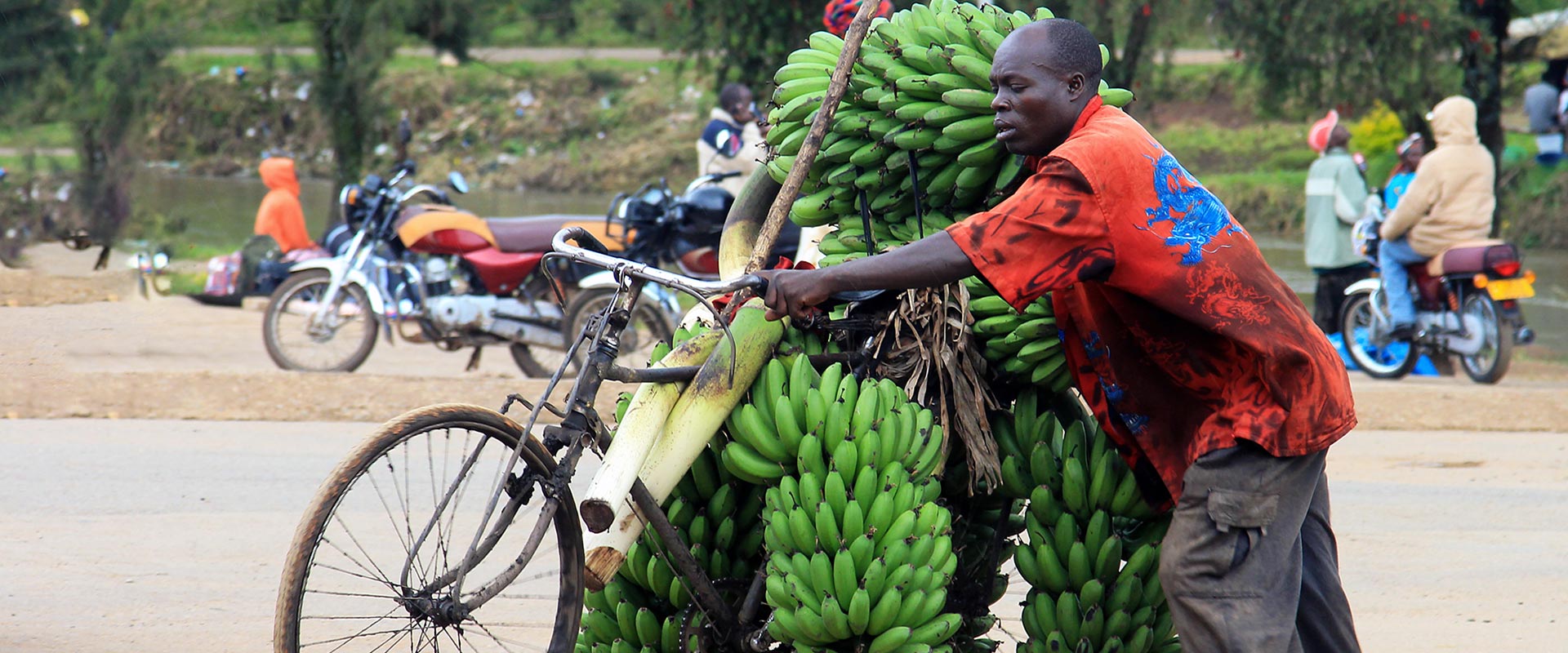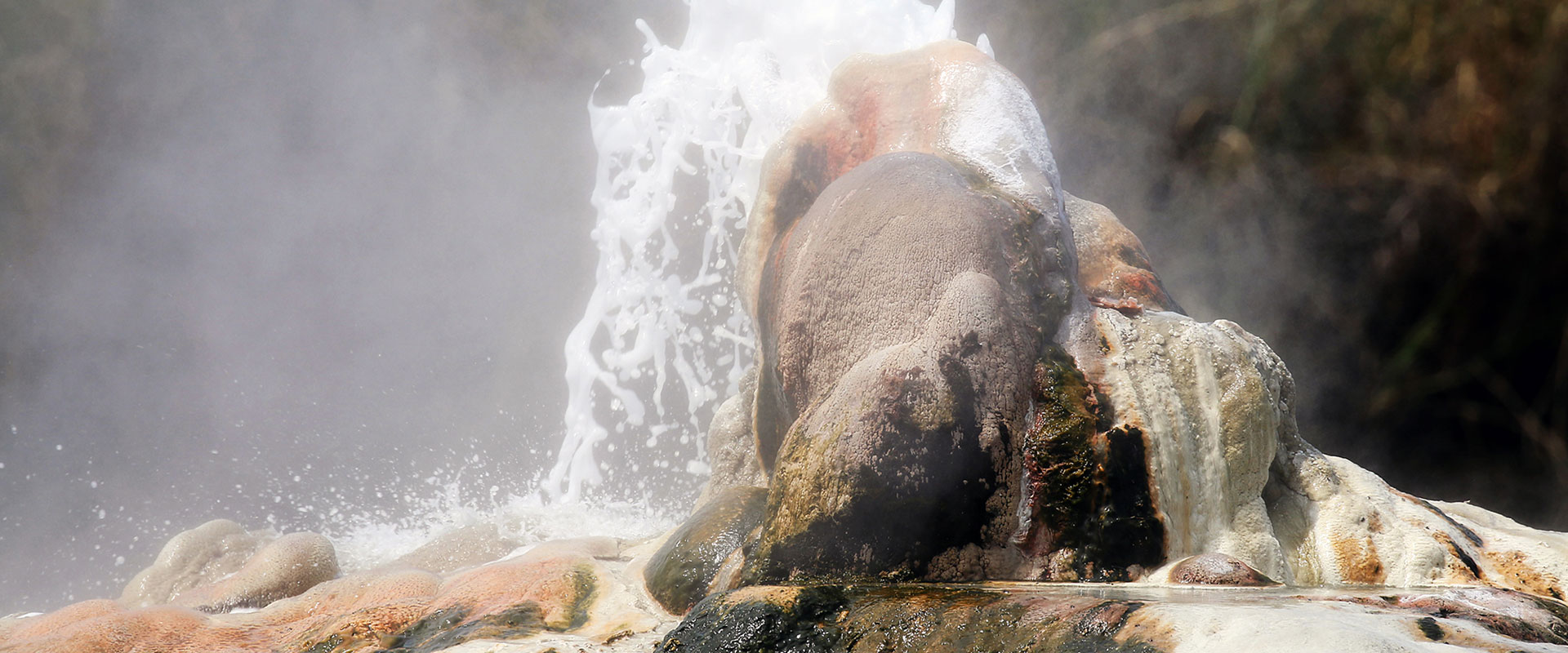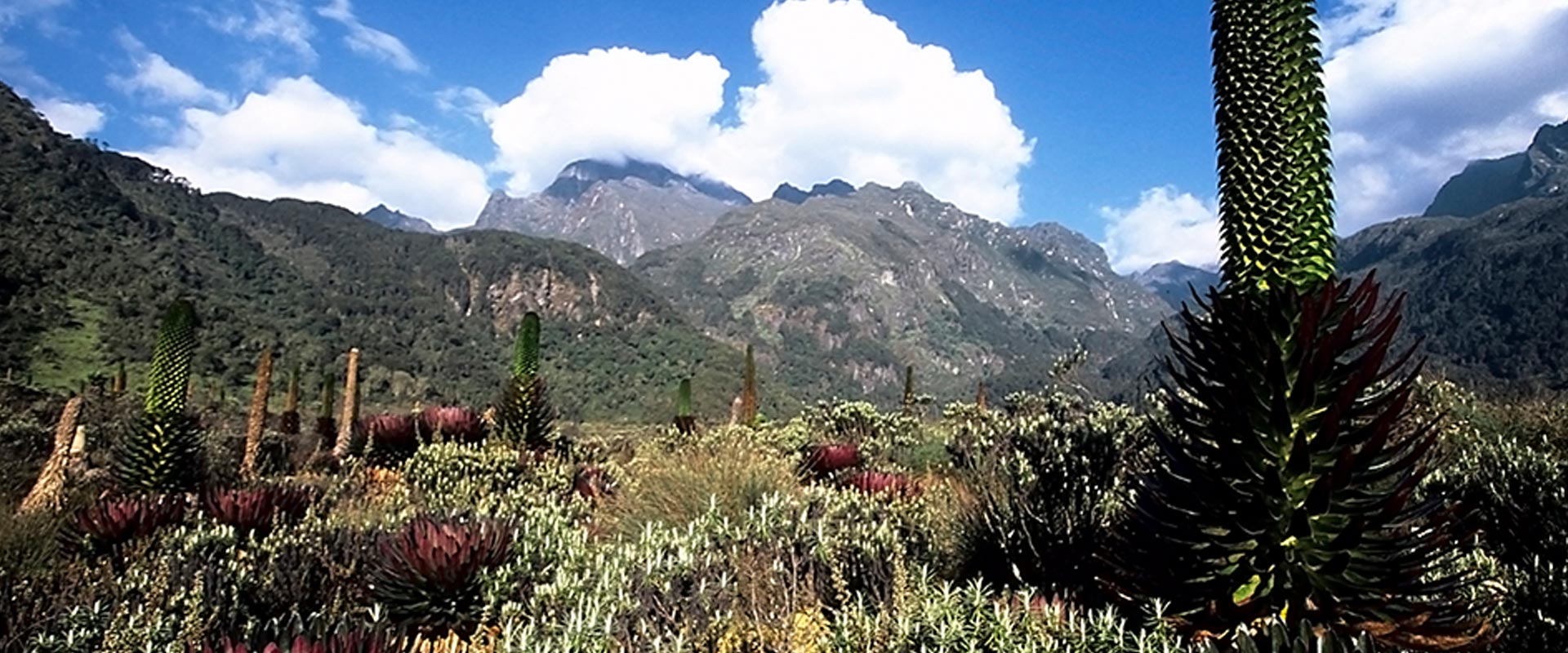Lodge Activities
The exceptional combination of our botanical garden complemented by the surrounding tropical forest attracts a wide variety of birds and animals, including vervet and Colobus monkeys. Also, in addition to many colorful butterfly species, birds such as the crested crane, sunbirds, hornbills, and turacos are a common sight in our spectacular gardens. Here, our visitors can enjoy extended walks in the forest revitalizing their spirits in peace and calm.
In addition to the nature walks, you can visit the farm kitchen and spice garden or venture on a guided village walk and experience local lifestyles. And for those interested in hiking tours to the lower elevations of the Rwenzori mountains or visiting the chimp troops of the Kibale forest, our knowledgeable staff is ready to provide you with the most relevant information and opportunities.
Alternatively, you can relax at the poolside while watching the colorful birds in the trees above. The swimming pool locale also features a separate children’s pool and an elevated veranda with a view of the tropical forest beyond. In addition, many consider Kluges Guest Farm one of the most family-friendly places in Fort Portal, as children can frolic about in our playground, botanical gardens, and spacious lawn areas.
The Pearl of Africa
Uganda is often described as the ‘Pearl of Africa’ where one can discover natural wonders not found anywhere. Crater lakes with the Rwenzori Mountains as a backdrop in Western Uganda, the Bwindi Impenetrable National Park with the once a lifetime opportunity of tracking the endangered highland Mountain Gorillas, and the Kibale National Park with its famous chimps now numbering more than 1,500.
Here, the discerning traveler can venture to climb the mountain gorilla’s habitat of bamboo forests and enjoy spectacular views of triple-canopy rainforests, alive with the calls of tropical birds. In addition, one can visit the mist-shrouded Mountains of the Moon, travel to the famous Murchison Falls National Park, with its enormous 43-meter falls of boiling water crashing into the wooded country below. And on to the golden rolling savannahs of the Kidepo Valley National Park, with its abundance of Big-5 game viewing opportunities.
Uganda offers 10 very distinct National Parks and is alive with contrasts and diversity. The miniature sunbirds, colored flashes in the morning light next to the massive lumbering forest elephants, disappearing like a mirage in the tropical jungle. And chimpanzees crashing through the forest canopy, with the gorilla chewing thoughtfully in the bamboo thicket.

Kibale National Park
The Kibale National Park (KNP) is situated in Western Uganda and comprises 766 square kilometers of ancient lowland and montane forests. The forest reserve is home to the largest concentration of chimpanzees in Africa, currently counting more than 1,500. In addition, 12 other species of primates, such as the black/white and red colobus monkeys, blue monkeys, and the rare L’Hoest’s monkey can be found in KNP.
More than 5,000 chimps are in various forest reserves in Uganda, based on research by the Jane Goodall Institute, and the Kibale National Park alone is home to about 1,500. Accordingly, KNP offers the best opportunity to experience habituated chimpanzee troops close up and in their natural habitat. In addition to regular chimp tracking, an extended day-long chimpanzee habituation experience allows visitors to join researchers as they follow chimp troops in their forest activities.
Kibale National Park is also known as a Birders’ paradise, with more than 320 bird species to discover by hiking an extensive network of forest trails. There is also the possibility to visit the Bigodi Wetlands Sanctuary, a community-based project known for its exceptional biodiversity, which includes several primate species and over 140 tropical bird species.
There are two forms of chimp tracking available in the Kibale National Park. The standard permit allows 2 to 4 hours of contact with a habituated chimpanzee troop. Alternatively, the extended chimpanzee habituation experience allows a smaller group to join researchers for up to 8 hours.
Other activities within the vicinity of the Kibale National Park are as follows:
Chimpanzee Habituation Experience
This is an alternative option to chimp tracking and allows a smaller group of visitors to have extended contact of up to 8 hours with a chimpanzee troop.
Bigodi Wetlands Sanctuary
Offers the visitor nature walks past scenic villages and forest tracks to the community-based Bigodi Wetlands Sanctuary, where you encounter several primate species, including black and white colobus, mangabey, vervet monkeys, and chimpanzees. The project is known for its spectacular biodiversity and is also considered a Birders’ paradise, with over 140 tropical bird species identified to date.
Crater Lakes Hikes
The area between Fort Portal and Kibale National Park is also known as the crater lakes region, with the opportunity for extended nature walks past massive crater lakes, scenic villages, and banana plantations.

Semuliki National Park
The Semuliki National Park (SNP) is situated in Western Uganda and covers an area of about 220 square kilometers next to the original Semuliki Wildlife Reserve; first gazetted in 1932 as the Toro Game Reserve and upgraded to national park status in 1993. The park borders the massive Ituri forest of the Democratic Republic of the Congo (DRC), which qualifies as one of the most extensive triple-canopy tropical forests in the world today.
The Semuliki National Park represents the only lowland tropical forest in East Africa, featuring more than 400 species of birds, 300 species of butterflies, and 53 species of mammals. And its location next to the Rwenzori Mountains and bordering the DRC also makes it one of the more remote areas in Uganda to visit.
The Semuliki NP is also known for its population of chimps, forest elephants, and buffalos, the last two being substantially smaller than their relatives roaming the golden plains of various savannah reserves in East Africa. The more than 50 species of mammals found in the park include elephant, buffalo, leopard, hippo, water chevrotain, blue monkey, De Brazza’s monkey, olive baboon, bush pig, and sitatunga, to mention but a few.
The park further features the geothermal Sempaya Hot Springs, the highlight of one of the two springs being a geyser with a 1-meter-high fountain. These hot springs attract a fair amount of birds both day and night since they are also a source of salt for many animals.
Other activities within the vicinity of the Semuliki National Park are as follows:
Sempaya Hot Springs
A visit to Semuliki National Park should include a hike to the hot springs. The one called Bitende is about 12 meters in diameter, and the other is called Nyasimbi and is a boiling 1-meter high geyser of bubbling hot water and steam.
Nature Trails
The Semuliki National Park offers a selection of guided hiking trails with the opportunity to discover forest elephants, hippos, crocodiles, and chimpanzees. The length of these hikes and nature walks varies from a few hours to all-day happenings. The forest reserve also qualifies as a Birders’ paradise with 450 recorded species of tropical birds, representing over 60% of tropical forest birds found in Uganda.
Amabere Caves
Here you have the opportunity to visit the Amabere Caves, situated below the Nyakasura Falls, which are located about 10 km west of Fort Portal on the Bundibugyo Road. The entrance fee to the cave includes a local tour guide who will enlighten the visitors about the ‘exotic’ nature and history of the cave and waterfall complex.

Rwenzori Mountains National Park
The ancient Greek mathematician and geographer Ptolemy, who then lived in Alexandria in Egypt, is credited with first naming the Mountains of the Moon. The famous explorer Henry Morton Stanley, then working his way through East Africa on a mission to find Dr. Livingstone, renamed them the Rwenzori Mountains. In a native Masaai dialect at the time, ‘Rwenzori’ means ‘rainmaker’, and the mountain can be notoriously muddy and tiring to climb as its lower elevations receive rainfall for up to 350 days a year.
The 120 kilometers long Rwenzori Mountains National Park (RMNP) covers an area of 996 square kilometers in Western Uganda, on the border with the Democratic Republic of Congo (DRC) and at 5,109 meters high, its central peak Mount Margherita, is the third highest mountain in Africa. The mountain range also features Africa’s fourth and fifth highest peaks, Speke and Baker respectively, and was listed as a UNESCO World Heritage Site in 1994.
Although not as high as Mt. Kilimanjaro or Mt. Kenya, climbing the Rwenzoris requires better technical skills and endurance to master. Climbing the Rwenzori Mountains is nevertheless a once-in-a-lifetime adventure that rewards the mountaineer with views of wondrous alpine landscapes, rare high-altitude pastures, and forests fringed with swamps and rivers.
The vegetation of the Rwenzori Mountains is unique to equatorial Africa, featuring five vegetation zones ranging from grassland, montane forest, a bamboo zone, heather zone, and the afro-alpine moorland zone. At higher altitudes, some plants such as lobelia and groundsel, reach extraordinary heights. The park also has 90 species of birds, 15 species of butterflies, and 4 primate species.
